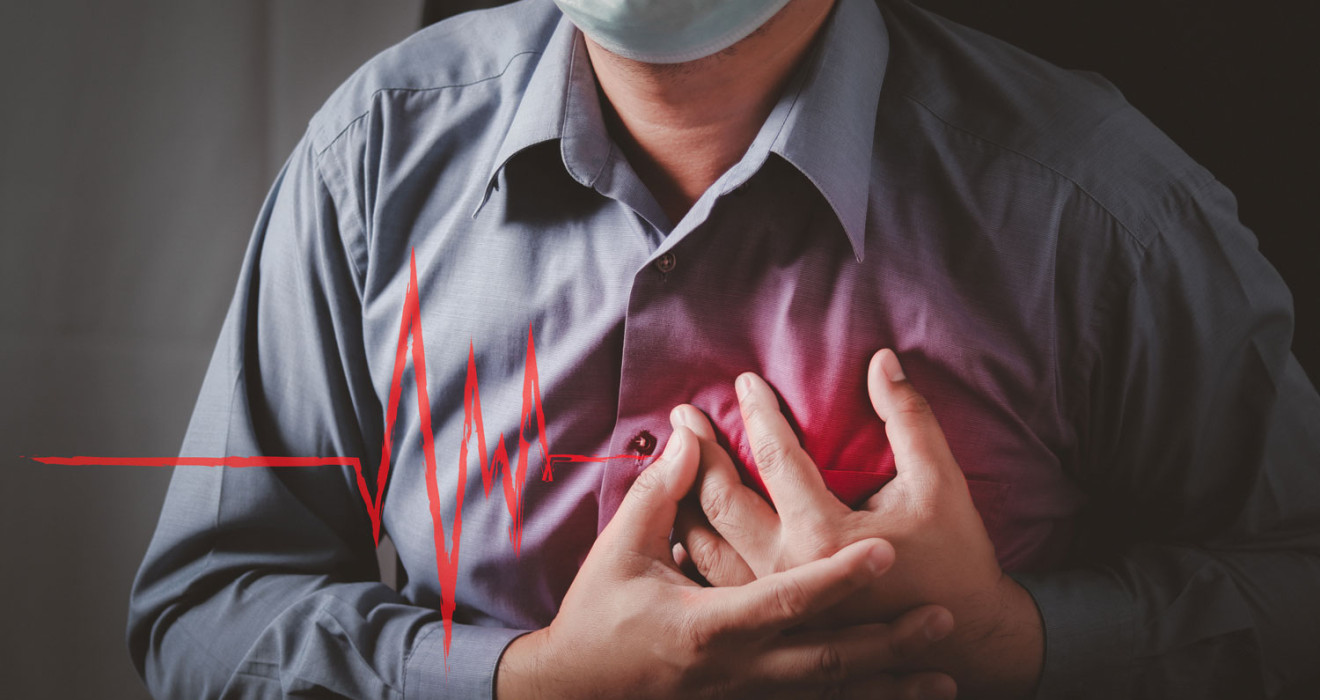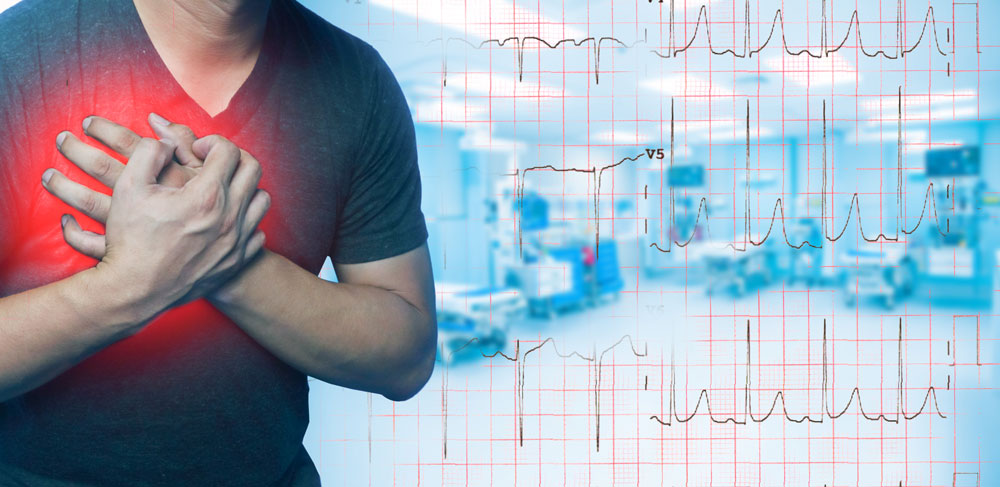
Heart Attack (Myocardial Infarction)
The heart is vital for human life and an organ with a muscular structure. By contracting an average of 100,000 times daily, it pumps almost 8,000 litres of blood into circulation. Due to any defect in the heart structure, heart diseases such as heart attacks or various inflammatory diseases may occur.
What is a Heart Attack (Myocardial Infarction)?
Myocardial infarction is a condition that occurs when the heart is cut off from oxygen and nutrients as a result of partial or complete blockage of one of the arteries that circulate the heart muscles. This causes the heart muscle to be damaged and its function to decrease.
What Causes Heart Attack (Myocardial Infarction)?
The most common cause is the accumulation of fat, cholesterol and other substances called plaque in the heart arteries. Heart attack risk factors are as follows:
- Smoking
- High LDL
- Having a family history of it
- Diabetes
- Increase of substances such as C-reactive protein, homocysteine, fibrinogen and lipoprotein A in the blood
- Obesity
- Increased pressure in blood vessels (high blood pressure)
- Age
What Are The Symptoms?
The most common heart attack symptoms are as follows:
- A feeling of pressure or tightness in the chest
- Sweating
- Palpitations or irregular heartbeats
- Pain or discomfort in the middle or left side of the chest
- Nausea or vomiting
- Pain or discomfort in the left arm, neck, jaw, back or stomach area
- Shortness of breath or difficulty breathing
- Dizziness or fainting
What are the Types of Heart Attacks?
Myocardial infarction is divided into three types: NSTEMI, STEMI and coronary spasm. These types are as follows:
- STEMI: It is the increase in the ST segment in the ECG examination. It occurs due to complete occlusion of the coronary arteries and is seen as the deterioration of the nutrition of a large part of the heart tissue.
- NSTEMI: There is no segment increase in this type of it, but it is in the major heart attack group that can damage the heart tissue. Coronary arteries are partially occluded; therefore, no change can be seen in the region expressed by the ST segment in the ECG examination.
- Coronary spasm: It is a hidden heart attack. It is similar to STEMI as a symptom but can be confused with complaints such as digestive problems and muscle pain. There is no occlusion in the coronary arteries, but temporary contraction occurs.
How is Heart Attack (Myocardial Infarction) Diagnosed?
For its diagnosis, tests such as ECG (electrocardiography), blood tests, echocardiography and coronary angiography are used.
- The ECG test measures the heart's electrical activity and shows that the heart is damaged during a heart attack.
- Blood tests measure the levels of certain substances in the blood to detect damage to the heart.
- Echocardiography helps to evaluate the non-working area of the heart muscle.
- Coronary angiography is a procedure used for imaging the heart arteries and helps to determine which vascular occlusion caused the heart attack.
What Are The Factors That Trigger Heart Attack?
Factors that trigger a heart attack are as follows:
- High blood pressure
- High cholesterol
- Smoking
- Age
- Diabetes
- Bad eating habits
- Obesity
- Gender
- Familial heart disease
- Stress
- Lifestyle
What To Do During a Heart Attack (Myocardial Infarction)?
Emergency medical attention should be sought immediately when signs of a heart attack are observed.
If a person is alone at the time of myocardial infarction, they should pay attention to the following:
- First, as soon as the pain starts, the person should call their relatives and inform them of the situation.
- Air circulation should be maintained in the room.
- A strong cough can temporarily increase blood flow.
- If there is aspirin at home, it should be taken with a glass of water.
- Absolutely nothing should be eaten or drunk.
- The window should be opened to allow oxygen to enter the room.
- The person should wait by lying down or sitting. Definitely not standing still.
- Exercise should not be done to reduce pain.
- Should not take a bath.
If someone has had a myocardial infarction around you, do the following:
- If you do not have health experience, do not interfere with the person, and do not give other patients or your heart medication.
- Request ambulance assistance immediately and transport the patient to the nearest hospital.
- Lay the person down in a suitable place.
- Take off additional clothing.
How Is Heart Attack Treated?
The heart attack treatment may vary depending on the patient's condition and the attack's severity. The most common treatments include balloon - stenting, medical therapy and heart bypass surgery.
- Coronary angiography is a procedure used to view the heart arteries.
- Balloon and stent is a treatment that helps open clogged heart arteries.
- Heart bypass surgery is used to bypass clogged arteries that cause heart attacks.
- Medical treatment focuses on treating the cause of the heart attack and helps prevent blood clots.
What To Do With Your Life Style After Myocardial Infarction?
Patients after a heart attack need to adopt a healthy lifestyle and continue specific treatments. Factors such as a healthy diet, regular exercise, smoking cessation, stress management, regular blood pressure and cholesterol measurements, medication use, and cardiac rehabilitation are important for maintaining a healthy life after a it.
Frequently Asked Questions
-
Ambulance assistance should be requested during myocardial infarction, and the person should reach the hospital as soon as possible.
-
Risk factors for heart attack include smoking, high blood pressure, high cholesterol, obesity, diabetes, familial characteristics, old age and stress. Also, men are at higher risk than women.
-
While it may happen once in some people, it may recur more than once in others. So this is something that varies from person to person.
-
Stress is a risk factor. Because stress raises blood pressure and increases heart rate, putting extra pressure on the heart.
-
It is more common in people over the age of 50.
-
Paying attention to the symptoms is vital to understand whether you have had a myocardial infarction. Symptoms of a heart attack include chest pain, shortness of breath, sweating, nausea, vomiting, dizziness, palpitations, and fainting.
-
It is a type in which the symptoms go unnoticed. This type of it is more common in elderly and diabetic patients.
-
Since it is not noticed in silent heart attacks, follow-up and treatment are important. Therefore, it is important to be aware of the risk factors and to be checked regularly.


